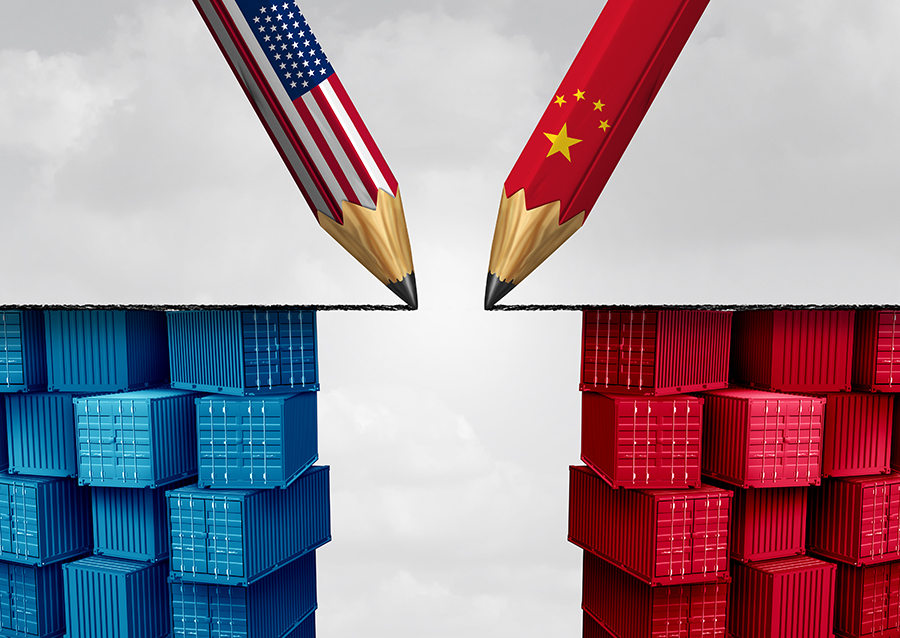
When congressional staff lawyer Katherine Tai became the first woman of color to serve as a top trade negotiator for the U.S. government in March of this year, one of her first tasks was shaping the Biden administration’s policy response to the trade war with China. Existing tariffs on imported Chinese products, put in place by the previous president, had created a hostile trade relationship between the two countries, and despite several attempts at de-escalation, tensions have remained high. With President Biden’s promise of a trade policy centered on American workers, and national security advisor Jake Sullivan’s advocacy for higher wages for American workers, versus opening foreign markets for corporations, Tai has quite the challenge ahead of her. She was welcomed by the U.S. Senate and lauded for her process-driven approach to policymaking earlier this year, but despite this reputation for systematic thinking, Tai has yet to offer significant details on plans to hold China accountable.
Earlier this month Tai announced that she expected to begin discussions with Chinese officials “in the near term” regarding implementation of the Phase 1 deal between the two countries. These discussions are considered by many to be long overdue; a stipulation in the original agreement called for high level consultations at six month intervals. Prior to Tai’s meeting with Chinese Vice Premier Liu He on May 26th, the last time the two parties met was August of last year. Little information was shared from their most recent virtual “candid exchange.”
This deal was a two-year agreement put in place in January 2020 by the Trump administration and Chinese Vice Premier Liu He, who negotiated the Phase 1 deal on behalf of Beijing. Tai has stated that it will serve as the foundation for further discussions, signalling that the new administration plans to build on the accord rather than scrap it for a dramatic shift in policy.
A central tenet of the deal was that China would boost purchases of U.S. exports by $200 billion during the 24-month term, above 2017 baseline levels. China thus far has not been able to meet these targets – currently having reached about 75% year-to-date of its commitment- in large part because of efforts made to combat the coronavirus outbreak. China also committed to protecting American intellectual property. While the USTR’s Special 301 report confirmed that China had made amendments to Patent Law, Copyright Law and Criminal Law, there were concerns around effective implementation, rampant counterfeiting, and less than satisfactory trademark protection. According to the USTR, these changes “fall short of the full range of fundamental changes needed.”
Tai has also remained noncommittal on the question of whether the $370 billion worth of annual imports for China that are currently under tariffs would be eased in any way, saying that it would depend on the effectiveness of the deal and upcoming discussions. “I have heard people say, ‘Please just take these tariffs off,’” Ms. Tai said. But “yanking off tariffs,” she warned, could harm the economy unless the change is “communicated in a way so that the actors in the economy can make adjustments.”
One thing she has been clear about is that she hopes to work with China on the Biden administration’s focus on climate change as an avenue for economic growth and innovation. Chinese Foreign Ministry Spokesperson Wang Wenbin has previously said that both China and the U.S. “stand to win from cooperation and lose from confrontation.” With both sides looking to cooperate and build on previous agreements, it seems likely that they will continue to move away from the open hostility of the early Trump administration. Whether or not that can be said with any certainty, however, remains to be explored.
Tai and the Biden administration as a whole has been very tight-lipped around the “top-to-bottom review of U.S.-China trade policy” that has been taking place. While answering Senators at her confirmation hearing, Tai repeatedly reiterated the USTR’s commitment to understanding the issue, building on the past, and implementing a check and balance process, but neglected to detail any of these points or provide any straightforward answers. This is not new: three weeks into the Biden administration, FP commented on Biden’s lack of a new trade agenda, and 100 days in, analysts questioned why the USTR still hadn’t engaged with Chinese officials. This apparent lack of clarity is hardly unexpected. In February of this year, the Wall Street Journal pointed out the competing interests of Biden’s high-powered China team. John Kerry, working as climate envoy, is working on an international climate deal where he needs China’s cooperation, as it is the world largest emitter of greenhouse gases. Meanwhile Jake Sullivan heads the National Security Council and, along with members of his team, is known to want to push harder against China. The Treasury, NSC, State Department and USTR now have to work together – despite their diverging perspectives.
So where does this leave us? Well, one thing Katherine Tai has repeatedly stated is that she hopes to diversify the trade tools used by the Biden administration to find creative solutions to long-standing issues. When speaking to the U.S. House Ways and Means Committee, Tai made clear that existing trade laws had more work to do to protect U.S. industries and companies. Laws should focus more on preventative and preemptive protection, rather than after the fact, when companies have already been harmed by illegal price dumping and subsidies. The USTR therefore will be coming up with new rules and regulations to safeguard American trade.
All this being said, it’s clear to Tai’s approach to trade with China is still very much a work in progress but is largely guided by the United States’ desire to maintain leverage over China, while garnering its support for climate change and COVID-19 vaccine IP initiatives. How the USTR will pull this off remains to be seen.
